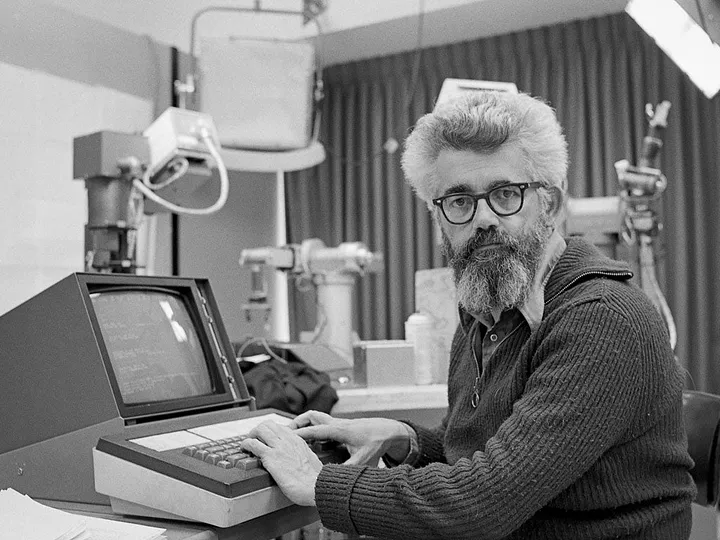John McCarthy — A Mind Behind Artificial Intelligence
computerscience·@simplestack·
0.000 HBDJohn McCarthy — A Mind Behind Artificial Intelligence
<center>  </center> John McCarthy was a pioneering computer scientist whose groundbreaking work laid the foundation for the field of artificial intelligence (AI). Known for coining the term “artificial intelligence” and creating the LISP programming language, McCarthy’s visionary ideas continue to shape the future of AI. This article explores his life, achievements, and the lasting impact of his work on modern technology. # Early Life and Education <center>  </center> John McCarthy was born in 1927 in Boston, Massachusetts, to a family with diverse cultural roots. His early fascination with mathematics and logic guided his academic journey, leading him to study mathematics at Caltech. He later earned his Ph.D. in mathematics from Princeton University, where his interest in computational logic began to take shape. These early experiences would later fuel his groundbreaking work in artificial intelligence. # The Birth of Artificial Intelligence <center>  </center> In 1955, McCarthy co-organized the Dartmouth Conference, which marked the formal beginning of AI as a distinct field of study. It was here that he coined the term “artificial intelligence,” proposing that human intelligence could be replicated in machines. McCarthy’s vision was ambitious: he believed that computers could be programmed to perform tasks that, when done by humans, require intelligence. One of his most notable contributions to AI was the development of the LISP programming language in 1958. LISP became the preferred language for AI research due to its powerful capabilities in symbolic processing. Even today, LISP influences many modern programming languages and AI systems, demonstrating McCarthy’s far-reaching impact. # Innovations in Time-Sharing <center>  </center> Beyond AI, McCarthy also revolutionized computing with the concept of time-sharing. In the early 1960s, computers were expensive and used by only one person at a time. McCarthy envisioned a system where multiple users could access a single computer simultaneously, significantly improving efficiency and accessibility. This innovation paved the way for the development of modern-day cloud computing and interactive systems. # Challenges and Missteps <center>  </center> Despite his many successes, McCarthy’s career was not without challenges. His early optimism about the pace of AI development led him to predict that human-level AI was just around the corner. However, the complexity of human intelligence proved to be more formidable than anticipated, and his predictions fell short. Nevertheless, his unwavering belief in AI’s potential has inspired generations of researchers to continue pushing the boundaries. # Legacy and Lasting Impact <center>  </center> John McCarthy passed away in 2011, but his legacy lives on through the technologies and ideas he helped create. From the LISP programming language to the concept of time-sharing, McCarthy’s contributions have left an indelible mark on the field of computer science. Today, as AI continues to evolve, we are reminded of McCarthy’s vision and the enduring question he sought to answer: Can machines think? # Summary https://youtu.be/K6CCDyKD8mU John McCarthy’s work remains foundational to the ongoing development of artificial intelligence. As we look to the future of AI, we stand on the shoulders of this visionary thinker who dared to imagine a world where machines could not just compute, but also reason and learn. His legacy challenges us to continue exploring the possibilities of intelligent machines. --- *If you liked this content I’d appreciate an upvote or a comment. That helps me improve the quality of my posts as well as getting to know more about you, my dear reader.* *Muchas gracias!* *Follow me for more content like this.* *[X](https://twitter.com/edca3911) | [PeakD](https://peakd.com/@simplestack) | [Rumble](https://rumble.com/user/simplestack) | [YouTube](https://www.youtube.com/@simple-stack-by-ed) | [Linked In](https://www.linkedin.com/in/edwardcasanova/) | [GitHub](https://github.com/ed3899) | [PayPal.me](https://paypal.me/edca3899?country.x=MX&locale.x=es_XC) | [Medium](https://medium.com/@ed.wacc1995/subscribe)* *Down below you can find other ways to tip my work.* ``` BankTransfer: "710969000019398639", // CLABE BAT: "0x33CD7770d3235F97e5A8a96D5F21766DbB08c875", ETH: "0x33CD7770d3235F97e5A8a96D5F21766DbB08c875", BTC: "33xxUWU5kjcPk1Kr9ucn9tQXd2DbQ1b9tE", ADA: "addr1q9l3y73e82hhwfr49eu0fkjw34w9s406wnln7rk9m4ky5fag8akgnwf3y4r2uzqf00rw0pvsucql0pqkzag5n450facq8vwr5e", DOT: "1rRDzfMLPi88RixTeVc2beA5h2Q3z1K1Uk3kqqyej7nWPNf", DOGE: "DRph8GEwGccvBWCe4wEQsWsTvQvsEH4QKH", DAI: "0x33CD7770d3235F97e5A8a96D5F21766DbB08c875" ```